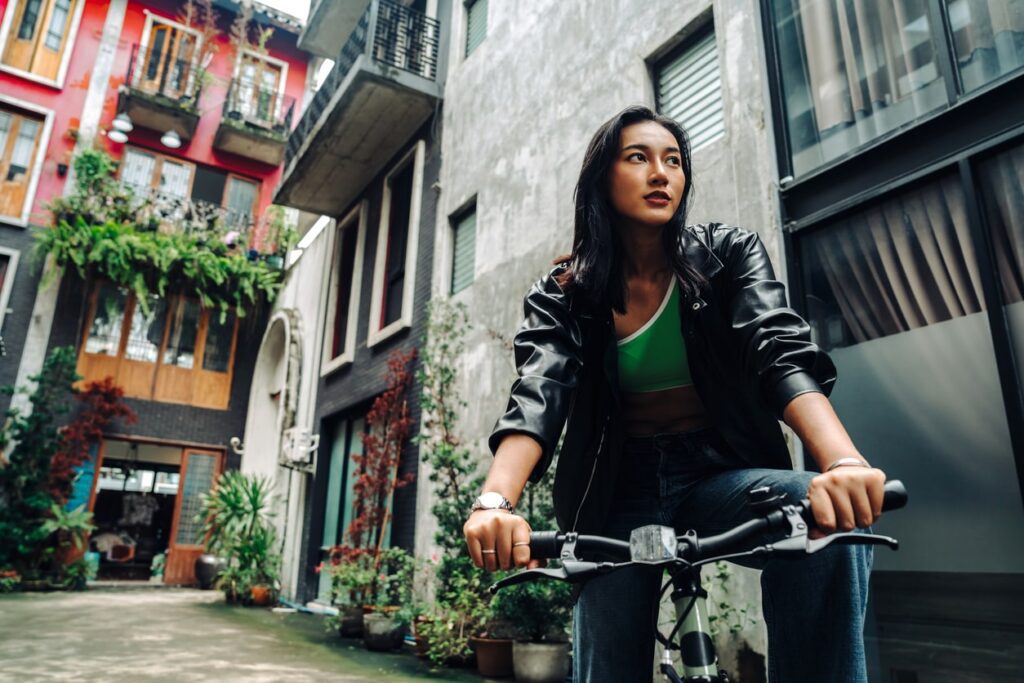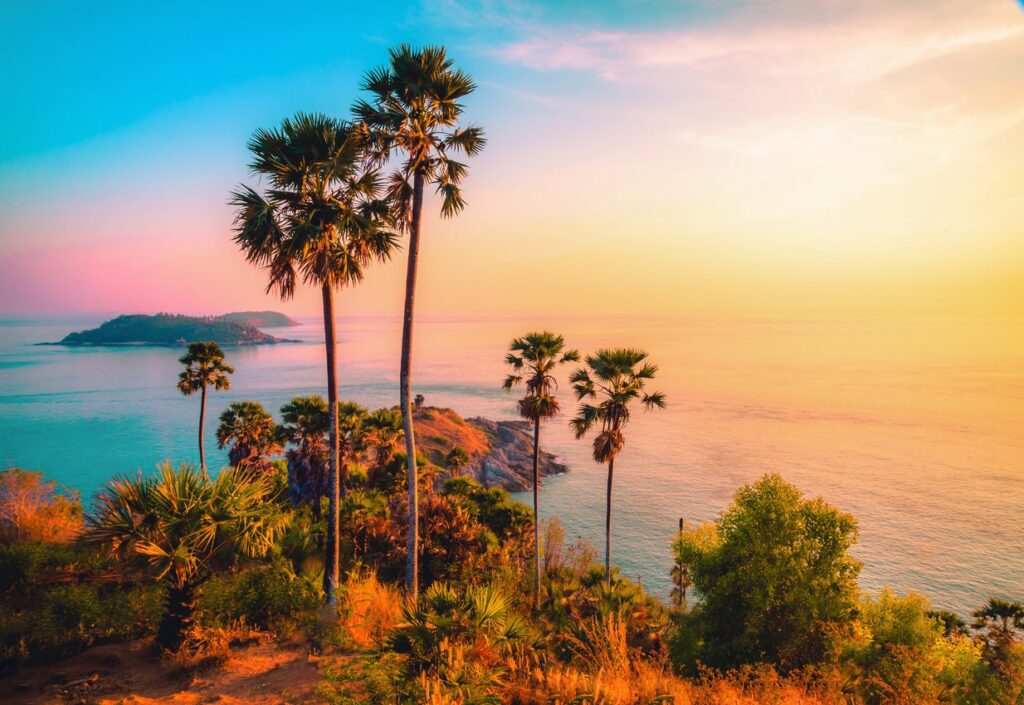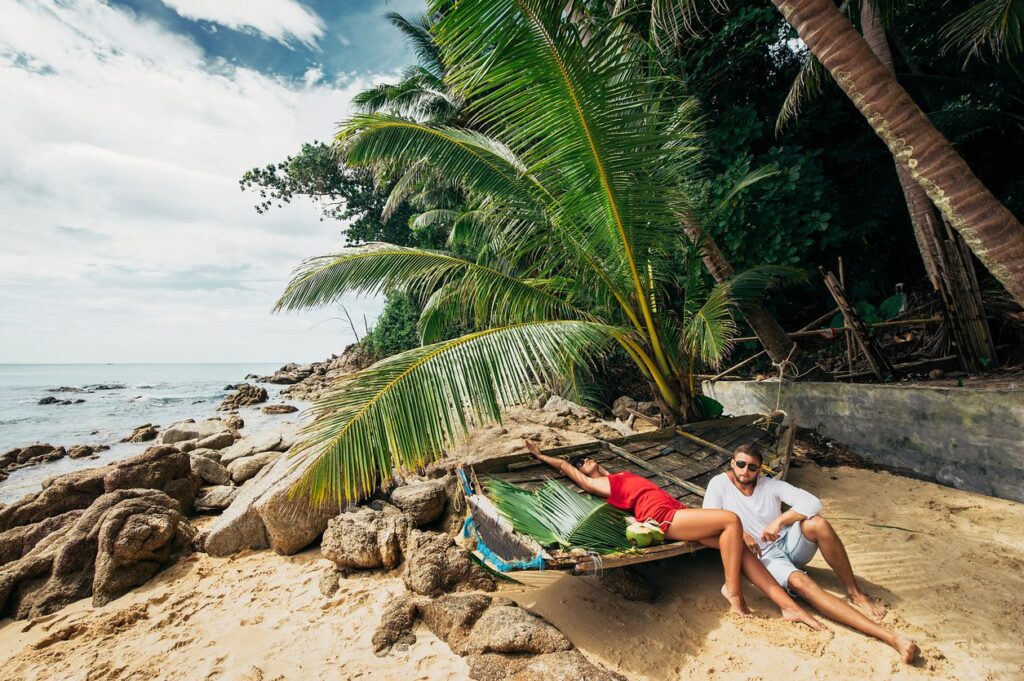a guide to Chiang Rai
The Embodiment of Northern Lanna Culture
Founded by Phaya Mengrai in 1262 as part of the Lao-Thai kingdom, Chiang Rai didn’t become a Siamese territory until 1786.
Located in the northernmost part of Thailand, Chiang Rai is blessed with mountainous grandeur, with rivers and jungles contributing to its natural wonders that are sure to leave visitors in awe.
Established as the first capital of the Lanna Kingdom in 1262, Chiang Rai has been a historically prominent city of the North. Even though Chiang Mai became the capital, later on, the neighboring province doesn’t compare to Chiang Rai as a travel destination. Some may think that Chiang Rai is similar to Chiang Mai with its climate and culture. However, the province has its own unique take on Northern Lanna culture and art. Chiang Rai remains one of the region’s most popular cities, especially during the cold season from late November to February.
Bordering Laos and Myanmar on the East and the North, respectively, Chiang Rai is deeply rooted in Lanna heritage and is culturally influenced by the two countries. The province is home to renowned artists who helped put Chiang Rai on the tourist map with their museum and temple creations. Its ethnic population is diverse with different hill tribes and those of Chinese lineage. This multiculturalism is reflected in the typical style of temple architecture, food, and textile development.
Chiang Rai is known for its relaxed and down-to-earth ambiance, preserving its serene sleepy town status with a friendly atmosphere. The province’s historical and cultural attractions are second to none and keep its Lanna identity intact through an impressive collection of temples, art, and cuisine. If you come here to enjoy life at a slower pace, you won’t be disappointed. A charming Chiang Rai allows you to relax and savor each moment as it comes.
The weather in the mountainous Chiang Rai is cooler than most parts of the country all year round. The average temperature is 24.6 °C | 76.2 °F. The best time to visit is the cold season from November to February, with the temperature dropping to one digit at nighttime till early morning.
Getting there
There are more than 20 flights a day flying from Bangkok to Chiang Rai. THAI Smile (+662 118 8888) operates 4 (during the high season from November to March) and 3 daily flights (end of March to end of October) between Bangkok and Chiang Rai. So does Nok Air (+662 088 8955).
Bangkok Airways (+662 270 6699) and AirAsia provide daily flight service too.
Nakhonchai Air operates 12 hour-bus services between Bangkok (Mo Chit 2 Bus Terminal) and Chiang Rai. It costs 725 Baht or about $24 USD. Call +662 939 4999 Monday to Saturday between 8:30 AM – 5:30 PM local time, or send email to customerservice@nakhonchaiair.com. Sombat Tour (+662 030 4999) provides the service too using different bus types.
From Chiang Mai, Green Bus operates daily service to Chiang Rai. Call +6653 266 480 or check the schedule here.
Getting around
Unless you want to spend some time in the city center for a day or two, a private car is recommended because it is more flexible and comfortable than using other transportation. The province is located in the mountainous area, making some other means of transportation hard to reach many top attractions in remote districts. If you already plan to visit the Golden Triangle, Doi Tung, and Chiang Saen, you might as well rent a car at the airport for your convenience. It costs 900 Baht up depending on the type of vehicle you choose.
Using traditional local means of transportation like Samlor and Tuk Tuk in the town center can be fun for a short distance trip. A tuk-tuk is a three-wheeled motorized vehicle used as a taxi, while a samlor is a human-powered tricycle. A samlor tour for two hours with stops at essential temples and attractions in town can be arranged for 200 Baht. For any trip by these two types of transportation, you have to negotiate the price first.
Riding a motorcycle is often a good choice for those traveling alone or with a partner. CR Big Bike Rentals on Thaiwiwat Road has a selection of motorbikes with price starting from 250 Baht (less than $8 USD) and provides traveling program consultancy. Call +6697 935 1298. Motorbiker CR close to the airport provides the same service with price starting from 300 Baht a day ($10 USD). Call +6684 263 9396. Blue pickup truck taxis, or what they call Song Thaew (meaning two rows) in Thai, are also available for short trips, costing around 15-25 Baht each or less than $1 USD, in town.
Things To Do in Chiang Rai
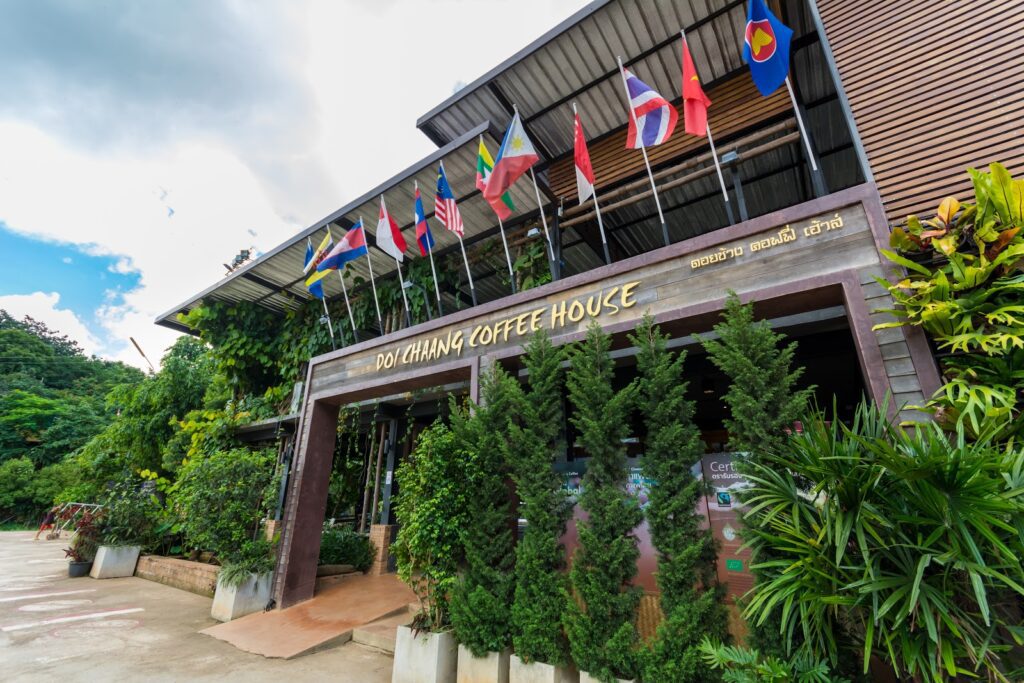
Coffee lovers know they will have a delicious pick-me-up whenever they set foot in any Doi Chaang Coffee outlet. It tastes even better when experienced in Chiang Rai. Made from specialty single-origin high-quality Arabica coffee, Doi Chaang beans are the results of what is only grown and produced locally in Baan Doi Chang in Wawee Sub-district, Mae Suai district. The name Doi Chaang has been synonymous with high-quality coffee domestically and internationally.
The Doi Chaang village in the northern highlands of Chiang Rai was one of many local communities to receive royal support from the late King Bhumibol Adulyadej Rama 9. The Late King kindly aimed to improve the welfare of villagers and reduce illegal drug cultivation by providing them with winter plants to grow in 1969, one of which was coffee. With continued support from government organizations, 40 families in the village kept cultivating coffee the following years during the time the Thai coffee industry was still underdeveloped, and local coffee beans were not widely accepted. In 2002, farmers in the village shifted towards a more sustainable future and ended up establishing Doi Chaang Coffee Original Co., Ltd. the next year, and the rest is history. With an early goal to ensure local coffee growers get a fair price for their production, the company grew from a local business with 40 acres of coffee plants in the village to a firmly established brand with the plantation area nearly 300 times bigger than its original scale within 15 years. Doi Chaang coffee has become the pride of Chiang Rai itself.
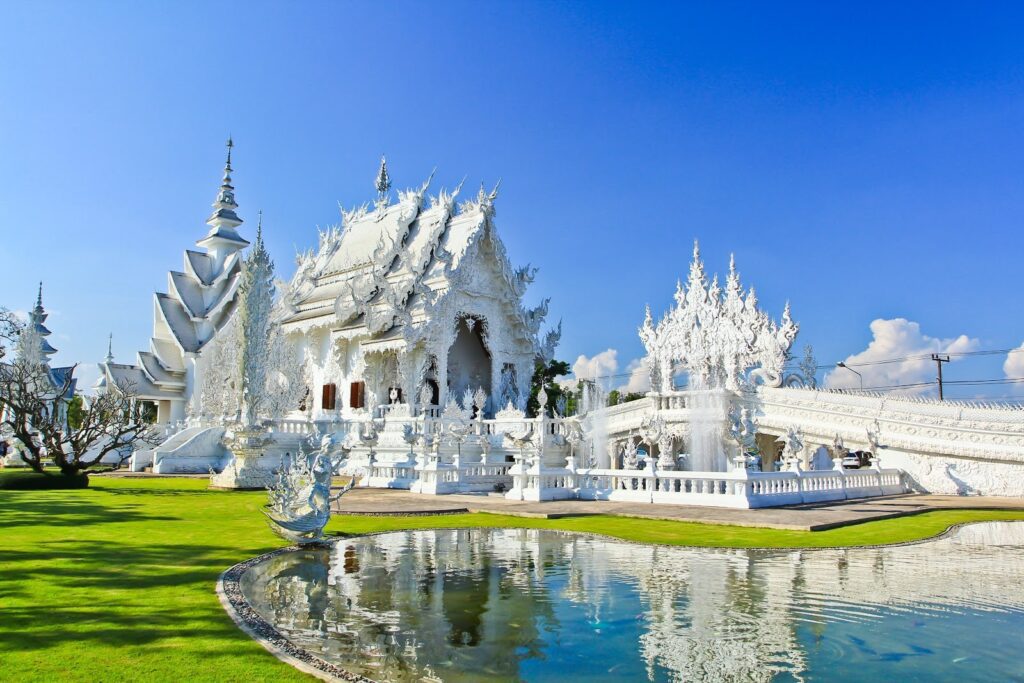
Though a relatively new monastery complex, Wat Rong Khun, or better known among foreigners as ‘The White Temple,’ in the Muang district, quickly became one of the more popular and one of the most visited tourist attractions of the province. Eye-catching and easily recognizable with pieces of glass embedded into the plaster and walling which sparkle in the sun, the temple was designed by renowned visual artist Chalermchai Kositpipat, who opened it to visitors in 1997. The temple is unique with its architectural and artisan significance to Thai culture and belief, as the bridge symbolizes crossing from hell to heaven.
The original Wat Rong Khun was left in a poor state towards the end of the 20th century, and the lack of funds made the restoration work stop. The Chiang Rai born Chalermchai, who was already a famous painter, then decided to redesign and fund the project to rebuild the temple with his own money to establish the monastic complex as a learning and meditation center for those wishing to gain benefits from the Buddhist teachings. Once open to the public, the temple received an overwhelming response from tourists and has since become a must-see attraction for visitors to Chiang Rai.
The monastery is located off Highway 1 on Phahonyothin Road, about 15 kilometers Southwest of Chiang Rai city center. Its white color signifies the purity of the Buddha, while the reflecting glass symbolizes his wisdom and teachings. To date, the monastery complex project is not yet finished, and once complete, there will be nine buildings according to the original plan.
Opening Hours
Weekdays 8 AM – 5 PM
Weekends 8 AM – 5:30 PM
Admission fee – 50 Baht
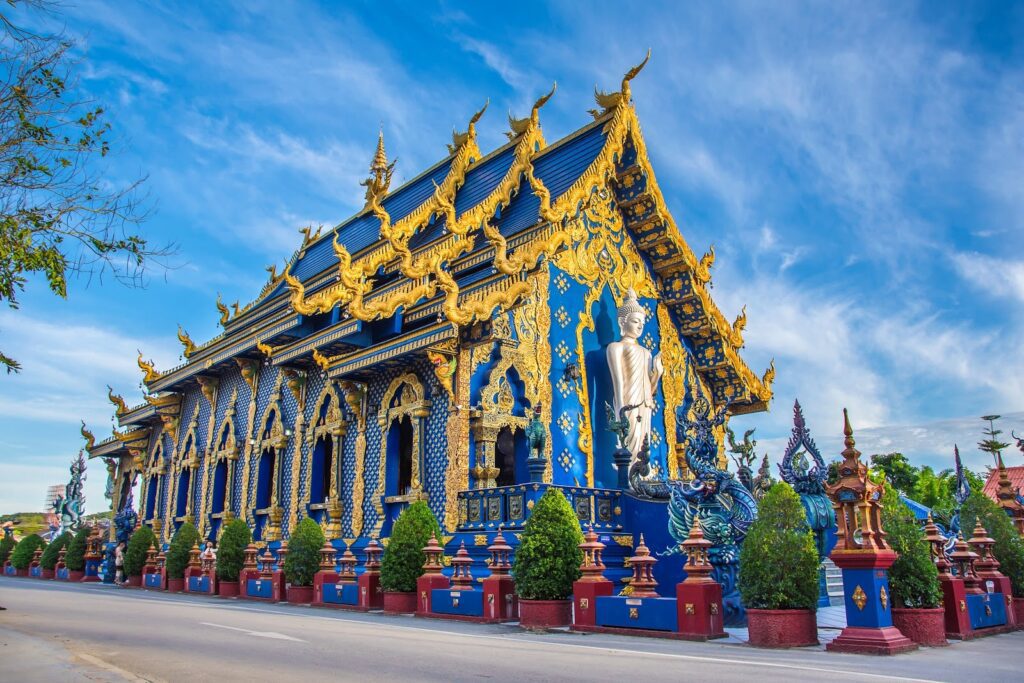
There must be some good reasons why Chiang Rai is home to two different temples that are distinctive in their own way due to their colors and are the two top attractions tourists love to visit. If you visit the White Temple, make sure you don’t miss its twin, the Blue Temple. The temple was exquisitely-colored with a shade of dark blue and striking gold, opposed to the plain color of the White Temple. The mastermind behind the resurgence of the monastery complex is Mr. Puttha Kabkaew, who was helping Chalermchai Kositpipat build the White Temple.
80 to 100 years ago, Wat Rong Suea Ten in Muang district was a deserted area by the Kok River. With not many inhabitants, wild animals thrived, including tigers, which locals often spotted jumping over the River, hence the name of the temple in Thai. When more people relocated to the area, they found out that they didn’t have a local temple to visit since devout Buddhists usually frequented temples. They decided to renovate the temple as a spiritual center for local villagers, and after 11 years of construction, the new monastery was unveiled in January 2016. Aside from the outside appearance of all structures, the inside the vihara, which is breathtakingly out of this world, with the main Buddha image in pearl white and elaborate, colorful mural paintings with dark blue being the prominent color matching the overall theme of the temple.
The intricate Blue Temple is open from 7 AM – 8 PM. Free admission.
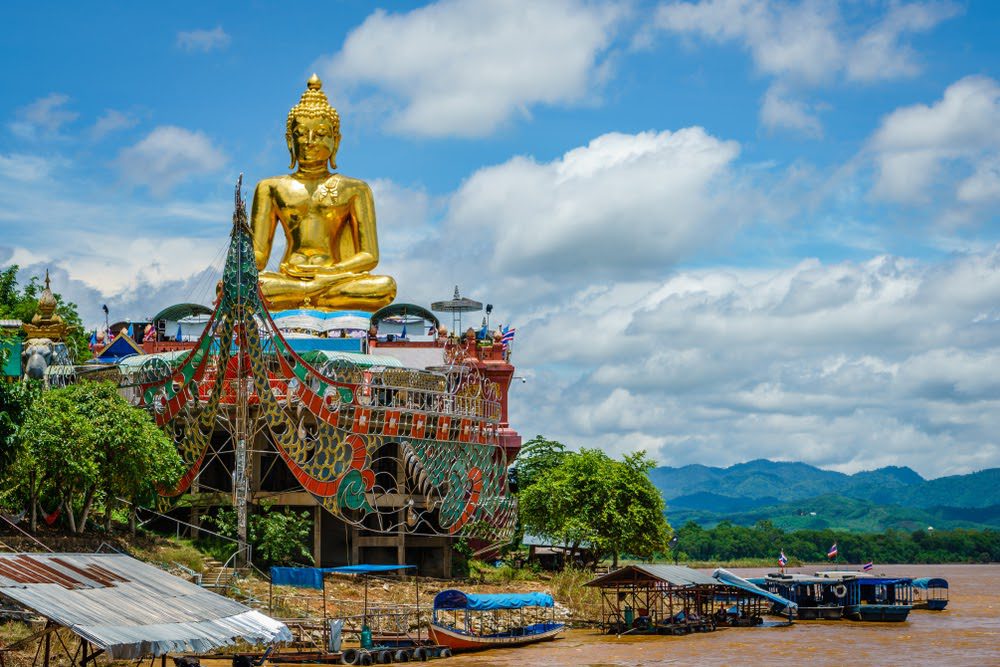
When it comes to tourist destinations, Chiang Saen is more appealing than the Muang district since it borders Laos and Myanmar with multiculturalism at its peak. About 70 kilometers from Chiang Rai city center and about 9 kilometers from Chiang Saen municipality, the area was once known as a significant crossroads of regional opium production. At the Golden Triangle, one can see the part of the River which separates Thailand from the two neighboring countries and the point that converges with Laos and Burma. You can also see where the Ruak and the mighty Mekong rivers join, which is a significant tourist destination with shops and eateries along the river bank. Head up to Wat Phra That Doi Pu Khao across the street to see the area from a better and panoramic perspective up the Mekong River. You’ll be able to see Myanmar on the left and Laos on the right of the River.
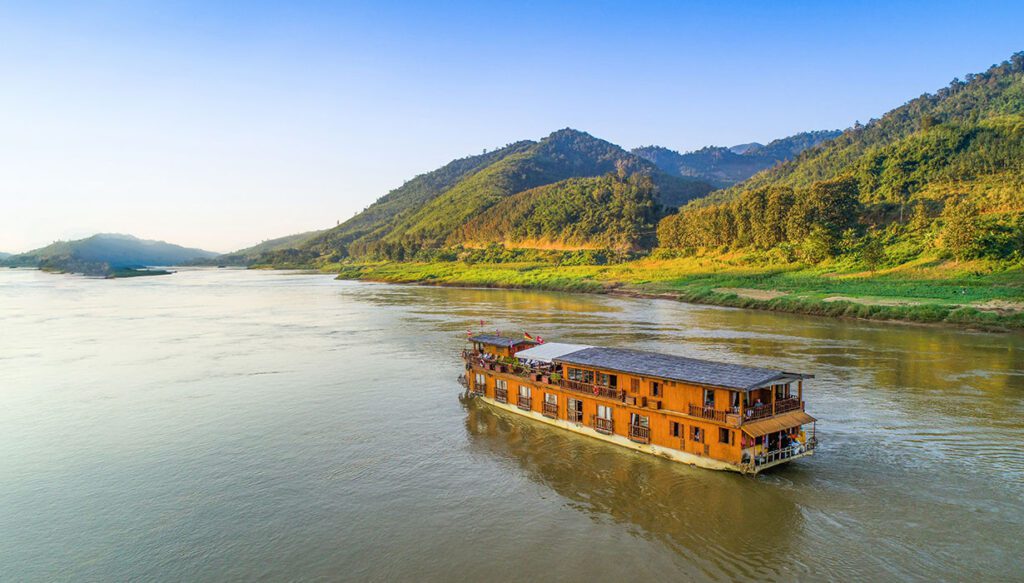
If looking from the River doesn’t satisfy you enough, the river cruise is the best option to explore the triangle more. There are many types of cruises to choose from. If you have time constraints, you should go on the two hour cruise. It goes along the River with stops at a local market and a fishing village, which you can witness the life of different nations just across the borders. If you happen to have more time to spare, a half-day cruise tour will allow you to see more of the three different lands. It’s recommended to stop and visit Chiang Saen on the Thai side to see numerous ancient temples and ruins.
If you’re already in the Golden Triangle area, there are many cruise agents to choose from. You might as well book one along the bank of the River. You can also opt to get on board at Chiang Saen town center. The two-hours cruise costs around 500 Baht. The sunset cruise is more popular, although you can do it in the morning as well.
If you want to book tickets in advance, check out Tha Reua Nuea Siam at +66 089 757 1896 or Sriwan +66 053 784 101
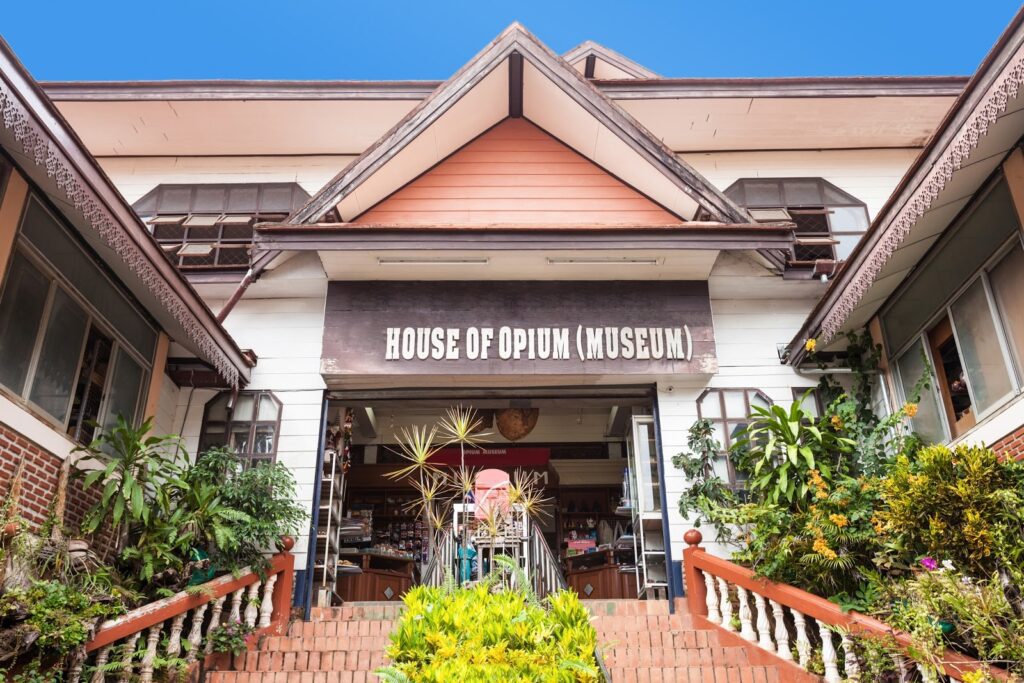
A visit to the Hall of Opium Museum is truly an eye-opener. The dimly lit corridor leading to the inside area of the museum is as haunting as the main location of a horror movie. Just walk through it to a flowerbed of poppies, from which opium is derived, and enter into the history and effects of the opium.
The content provided to you throughout the tour is well-curated and superbly presented through the use of multimedia. For instance, the museum educates you in the 5,000-year history of opium, its illegal trade, and the negativity of drug abuse. The museum dives deeper to explain to visitors how royal projects led by the late King Rama IV and his beloved mother helped change the lives of local people once dependent on and gradually destroyed by opium.
The 2004 PATA Gold Award-winning museum is located at the Golden Triangle Park, opposite the Anantara Hotel, and a little over a 50-minute drive from Chiang Saen town center. It is open daily from 8:30 AM. to 4 PM. but is closed on Mondays. Admission costs 200 Baht. Visit their website for more information.
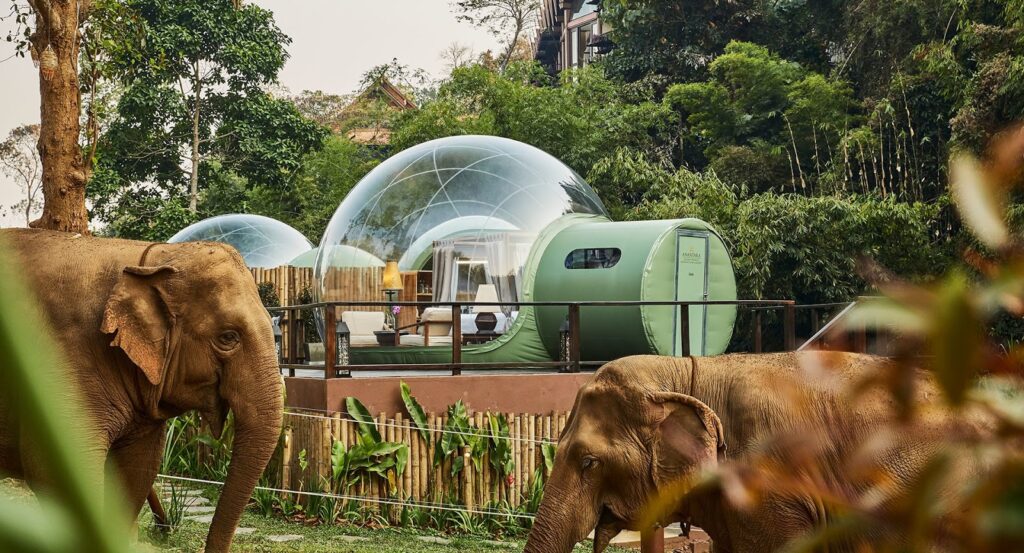
Anantara Golden Triangle Elephant Camp & Resort opposite the Hall of Opium Museum is known for its dedication to maintaining the wellbeing of elephants in their compound.
The Resort overlooks the stunning Golden Triangle, where the three countries converge at the Mekong River is home to the Golden Triangle Asian Elephant Foundation (GTAEF), established in 2003, where 22 rescued ex-street elephants reside. The camp is built like a traditional village. It works alongside the foundation in employing elephants and entire mahout families while continuing to perform street rescues, having helped more than 50 elephants.
Here at the camp, they work closely with mahouts to oversee the care and wellbeing of all elephants. These gentle giants enjoy vast land to roam around while receiving proper nutrition and medical care. Part of the proceeds from hotel operations is used to fund the foundation.
Visit the camp and see it for yourself. Anantara Golden Triangle Elephant Camp & Resort is located at 229 Moo 1, Wiang, about 42.8 kilometers from Chiang Saen town center. Tel. +66 053 784 084. Visit their website for more details.
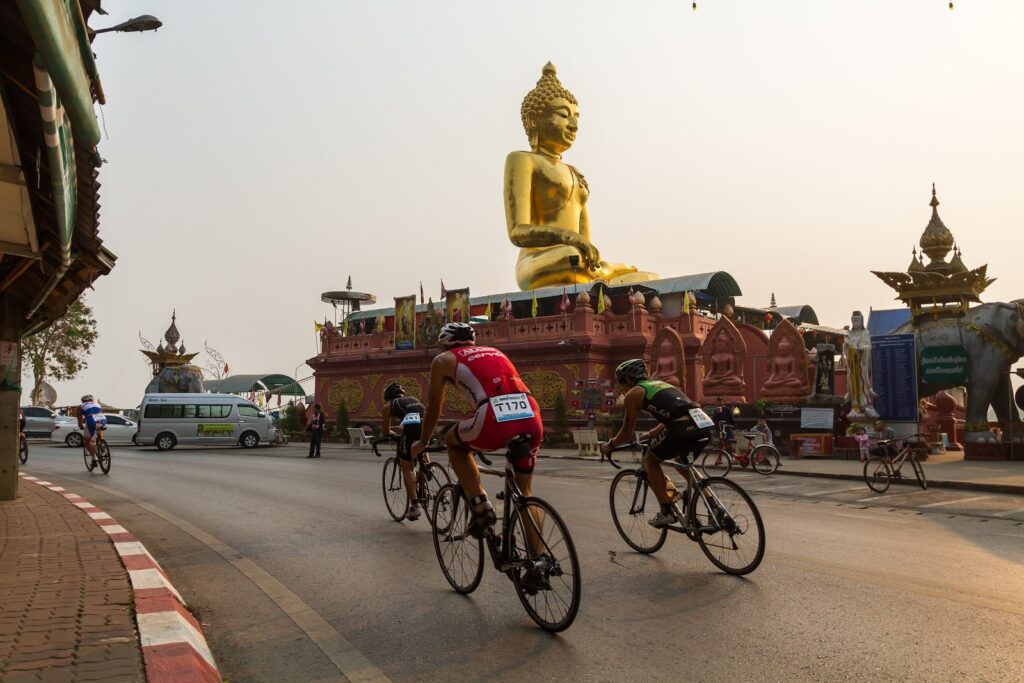
Set on the banks of the Mekong River, the small but charming Chiang Saen is not to be missed by all means. The origins of the town date back to the 13th century with no reliable written history before this period could be found. The town is scenic with a laid-back ambiance and is culturally rich, dotted by temples, historic buildings, and ruins. With well-connected and well-conditioned roads linking Chiang Saen to the heart of the Golden Triangle, it comes as no surprise why locals and tourists love to explore what the town has to offer on their bike. It’s quite an experience for biking enthusiasts considering the riverside route is breathtaking, and Chiang Saen is less crowded compared to Chiang Mai.
While across the River, developments in the form of building constructions can be spotted along on Laotian land. The riverside in Chiang Saen remains mostly undeveloped with new hotels sporadically popping up along the serene waterfront, making it ideal for biking.
The ancient town of Chiang Saen, considered one of the oldest cities in the North and one of the oldest settlements in the Kingdom of Thailand, is worth a visit. Despite being a small district in Chiang Rai, the area was the location where another kingdom predating the Lanna era was thriving, located on a flat portion of land on the western side of the River. Visitors can see a multitude of archaeological sites and monuments which were left behind as the legacy of the kingdom’s long history. Main attractions include the 700-year-old Wat Chedi Luang. Check out Chiang Saen National Museum if you’re keen on archaeology and history with a collection of ancient artifacts recovered from archaeological sites in Chiang Sean and nearby areas on display. It’s open Wednesday to Sunday (except national holidays) from 8:30 AM – 4:30 PM.
If you’re not a serious biker and enjoy pedaling along the waterfront and ancient town casually, you can borrow a bicycle at the Chiang Saen Tourist Center, which also provides a sightseeing tour on an open bus around town between 8:30 AM – 4:30 PM. Call +66 053 777 287 to check the availability of the service.
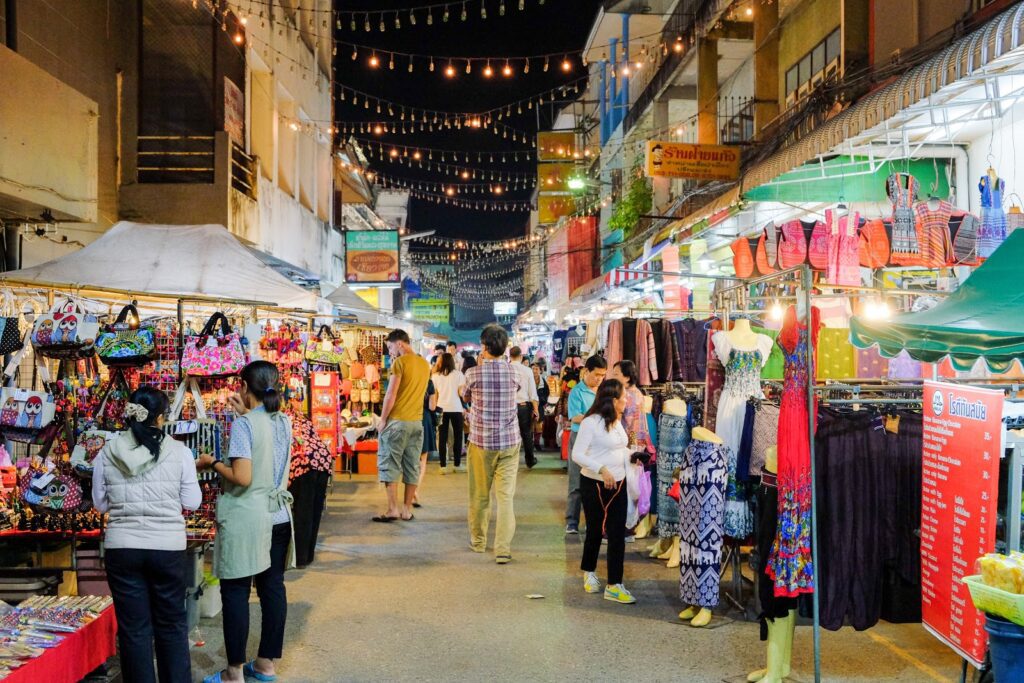
For foodies and shopping enthusiasts, a section of the riverside area is closed off to vehicles every Saturday, allowing locals and visitors to wander around the Saturday Walking Street market.
Unlike Chiang Mai’s and Chiang Rai’s city centers, the town of Chiang Saen has fewer things happening, with its municipality’s Christmas and New Year’s light decoration being less glamorous than that of the chain hotels in more populated cities. The walking street is no exception, being organized on Saturdays and far simpler than its counterparts in Pai or Chiang Mai’s Tha Pae. Yet simplicity is its charm, and the town’s waterfront is more scenic and romantic. With food stalls and makeshift shops lined up along the riverside street, it’s fun to look for something you might end up buying, of course, without forgetting to negotiate for the best price. For street food lovers, options of barbecues, curries, salads, and rice and noodle dishes should whet your appetite, especially after a long stroll. Pick an eatery or a stall, take a seat on the mat or a low stool, and savor all delectable tastes you’ve ordered as you enjoy the sunset in the great Mekong. You can behold the spectacular sundown first before venturing off shopping and dine late.
The walking street market kicks off at 4 PM until midnight, guaranteeing you will enjoy shopping till you drop and eating all you can.
Don’t forget to try some dessert from Pa Uan Bua Loy (+6653 743061, +6685 0323249), a stall serving Bua Loy, glutinous rice balls in coconut milk. This local auntie’s recipe is among the favorite dishes served to Her Royal Highness Maha Chakri Sirindhorn on many occasions. She serves her famous and delicious Bua Loy in 5 different favors daily from 5 PM – 9 PM at the Night Bazaar. You’ll notice her stall from the long queue of customers.
Chiang Rai is also known for silver jewelry. You can find shops along the night bazaar areas selling rings, necklaces, earrings, etc. made of 92.5% silver. Check out Silver Chiang Rai Night Bazaar (+6681 993 1128)
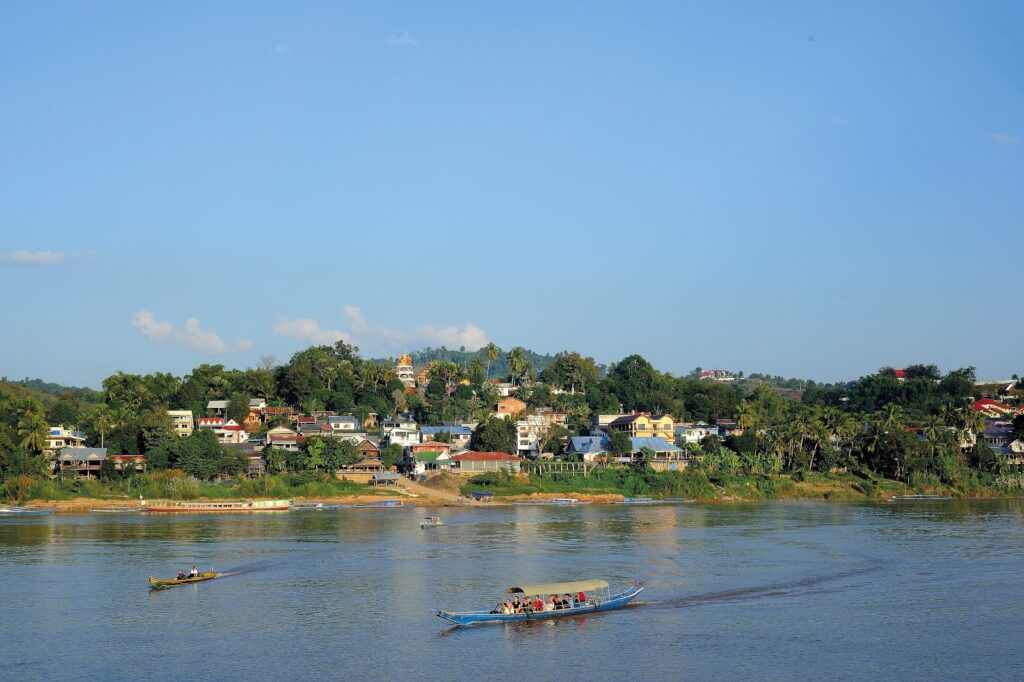
More options are available for tourists to connect Thailand to different parts of Laos, with a few more friendship bridges opened during the last five years. Yet in Chiang Rai, there is no experience more romantic and soul-soothing than boarding a cruise and cross the Mekong downstream from Huay Xai in Laos to Luang Prabang, the World Heritage city. It promises to be another cruise trip to remember.
Located 55 kilometers away from Chiang Saen, the riverside Chiang Khong district is opposite Laos’ Huay Xai. Local villagers from the two sides used to travel back and forth daily by boat until the fourth Thai-Lao friendship bridge was operational in December 2013, allowing for more tourist traffic from Thailand into Laos.
Though regarded as a riverside border town mainly visited for its ferries across the River to Huay Xai in Laos, Chiang Khong, like Chiang Saen, is another great spot to soak up the Mekong atmosphere before crossing over. You should spend at least one night here before crossing over to Laos with Luang Prabang as your destination.
Make sure you bring the passport with you since you need a visa, which is about $35 USD, to enter Laos. The 2-day 1-night cruise with a stop at Pak Bang costs around 900 Baht or $30 USD. Some resorts organize their cruise, which takes longer with more stops at different locations between the Golden Triangle and Luang Prabang.
Slow boats depart Huay Xai between 9:00 AM – 11:30 AM, taking 2 days and one night to reach Luang Prabang, while the faster one leaves at the same time. Fast boats take 6 hours to reach their destination, but it costs more at 1,450 Baht or $49 USD.
From Chiang Khong Border Checkpoint, tourists need to take a bus across the bridge to Laos and, after the formalities, you need to hire a small bus at the cost of 400 Baht to Huay Xai, which takes about 20 minutes to get there. From there, you can buy a slow boat ticket to go on a 30-hour cruise to Luang Prabang.
Anantara organizes a 3-day/2-night cruise between the Golden Triangle to Luang Prabang aboard the Gypsy, a highly exclusive rice barge with only two deluxe cabins. Activities include visits to remote elephant camps, silk weaving villages, and thousand-year-old caves. Contact Anantara Reservations Team at +662 365 9110 or reserveanantara@anantara.com.
